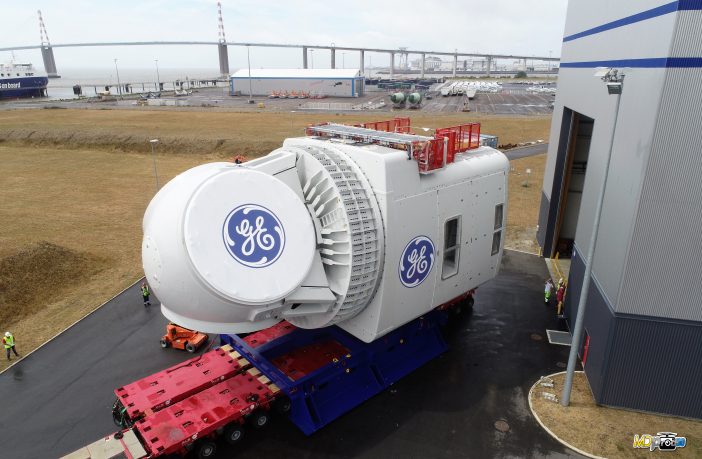- GE, Fraunhofer IGCV and voxeljet AG have annaounced a research partnership to develop the world’s largest 3D printer for offshore wind applications in order to streamline the production of key components of GE’s Haliade-X offshore wind turbine.
- Binder Jetting 3d printing, is an additive manufacturing technology that uses the selective application of binding fluids to bond powdered materials in layers to create a form.
The Advance Casting Cell (ACC) 3D printer under development will benefit from financial support from the German Federal Ministry for Economic Affairs and Energy and will be capable of printing molds to cast components for the nacelle2 of the GE Haliade-X that can each weigh more than 60 metric tons, reducing the time it takes to produce this pattern and mold from ten weeks or more to just two weeks.
The use of the 3D printer is expected to reduce the product’s carbon footprint by eliminating the need to transport the large parts from a central manufacturing location. The partners expect to launch the project during the third quarter of 2021 with initial printer trials starting during the first quarter of 2022.
The project involves the development of a new, large format 3D printer capable of producing sand molds for casting the highly complex metal parts of different shapes and sizes that make up an offshore wind turbine nacelle. The modular 3D printing process, which is based on voxeljet’s core “Binder-Jetting” technology, can be configured to print molds for castings up to 9.5 meters in diameter and 60-plus tons in weight
The Fraunhofer Institute for Casting, Composite and Processing Technology IGCV is responsible for casting and materials technology issues as well as digital process monitoring. “We are taking a close look at thermal management during casting, and we will evaluate the ideal proportions of the printing materials,” said Dr. Daniel Günther, Head of Department Molding Processes and Molding Materials at Fraunhofer IGCV. “Also, we will develop and test new approaches to process monitoring as part of the project.”
Based on prior experience the team expects to significantly improve the environmental footprint of processes involved in producing the Haliade-X type wind turbines. This sustainability aspect is a firmly established guiding principle of research at Fraunhofer-Gesellschaft, according to the institute’s director, Prof. Dr. Wolfram Volk, who adds: “We aim to optimize the mold printing to avoid extremely costly misprints or even miscasts, to save on binder and activator, and to improve mechanical and thermal behavior during casting. By developing a process that conserves resources as much as possible, we want to help to improve the environmental and cost balance in the manufacture of wind turbines.”
Author: Bryan Groenendaal















